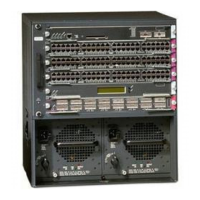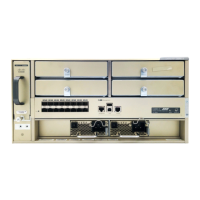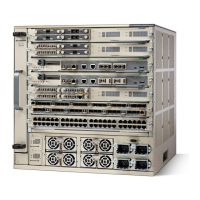CHAPTER
9-1
Catalyst 6500 Series Content Switching Module Configuration Note
OL-4612-01
9
Configuring Health Monitoring
This chapter describes how to configure the health monitoring on the CSM and contains these sections:
• Configuring Probes for Health Monitoring, page 9-1
• Configuring Inband Health Monitoring, page 9-7
• Configuring HTTP Return Code Checking, page 9-8
Configuring Probes for Health Monitoring
Configuring health probes to the real servers allows you to determine if the real servers are operating
correctly. A real server’s health is categorized as follows:
• Active—The real server responds appropriately.
• Suspect—The real server is unreachable or returns an invalid response. The probes are retried.
• Failed—The real server fails to reply after a specified number of consecutive retries. You are notified
and the CSM adjusts incoming connections accordingly. Probes continue to a failed server until the
server becomes active again.
The CSM supports probes used to monitor real servers. Configuring a probe involves the following:
• Entering the probe submode
• Naming the probe
• Specifying the probe type
The CSM supports a variety of probe types that monitor real servers, including FTP, DNS, or HTTP.
Note By default, no probes are configured on the CSM.
When configuring the CSM for health probe monitoring, you can use a multiple-tiered approach which
includes the following actions:
• Active probes—These probes run periodically. ICMP, TCP, HTTP and other predefined health
probes fall into this category. Scripted health probes are included here as well. Active probes do not
impact the session setup or teardown system.
• Passive monitoring (in-band health monitoring)—Monitors sessions for catastrophic errors that can
remove a server from services. Catastrophic errors may be reset (RST) from the server or no
response from a server. These health checks operate at a full-session rate, and recognize failing
servers quickly.

